Clifford Garstang's Blog, page 115
December 7, 2011
Bring the Retreat Home
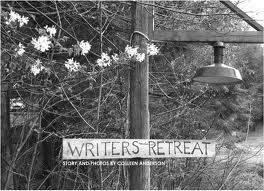
I recently completed a two-week stay at the Virginia Center for the Creative Arts. VCCA isa wonderful place in a beautiful location, and I always get a lot done when I'mthere (this was my seventh residency there, eighth if you count the two weeks Ispent at VCCA's French outpost in Auvillar this summer).
Since I'm a full-timewriter (minus the occasional short-term teaching or freelancing gig and myvolunteer role as a magazine editor), I always wonder why it is that I can'tget as much done at home as I do at a colony like VCCA. This blog post is anattempt to understand this phenomenon and to consider what steps I might taketo replicate the writing retreat experience at home.
[I feel especially guilty about this because I live just 60miles from VCCA, in a setting that is very similar, in a large house out in thecountry that I've got to myself (and my dog); I've even got my own land andwoods on which to take walks, just as I do at VCCA.]
I should say at the outset that I don't think it's possibleto do this on a permanent basis—it's like constantly running a marathon. Butfor relatively short bursts of a week or two or three, I think it is absolutelydoable. And that's good, because around Christmas I'll begin edits on a noveland I will need/want to be fully engaged in that process for as long as ittakes.
Let's start by understanding what happens at a colony. I'veonly been to three and they were different in important ways. But I'll use VCCAas my example and point out the differences as I go along.
It's away from home. At VCCA you get a bedroom with a sharedbathroom plus workspace in a separate studio building. (At Kimmel HardingNelson you share an apartment with another artist, and your studio, if you're awriter, will be a separate room in the apartment.) There are other artists around. At VCCA, there are about 25artists in residence at a time, split roughly between writers and visualartists, plus a couple of composers. (At VCCA France there are only fourartists in residence; at KHN there are five.) Someone cooks for you. At VCCA, breakfast and dinner are served ina dining room in the residence building, with lunch delivered to a kitchen inthe studio building. (At VCCA France and KHN you're on your own, although thereare adequate kitchen facilities for food preparation.) No one bothers you. There are optional presentations that theresidents arrange in order to share their work with the other artists, but ifyou don't want to attend, you don't have to. The phone doesn't ring; there is no mail; the internet connectionis spotty.
I work pretty steadily from 8 to 12 and 1 to 5, minus an afternoonwalk (and breaks to make coffee/tea), and then in the evening from 7 to 10(although that's usually reading).
Allof which contributes to FOCUS. If, like me, you don't have a full-time job,your problem at home isn't time, it's what you do with your time that slowsyour writing down. (Having kids in the house is a special challenge, since theycan't be ignored; just don't use them as an excuse not to get any writingdone.)
Focusis something I struggle with a lot, and I know that many of us do. We try to dotoo many things at once, and while we may give the appearance of productivity,I believe the writing suffers. So in considering how to "Bring the RetreatHome," it's really creating an environment for focus that I'm most interestedin.
So,how to create focus at home?
Dedicated Workspace. You aren't going away from home, but maybeyou have space in your home that is dedicated to your writing. (Or, if you'rereally lucky, you've got a cabin/shed/studio on your property). I'm fortunatein that I have a large spare bedroom/loft upstairs that is my office, with roomfor books, a reading chair a large desk, and my dog's bed (a loveseat). Tocreate focus, though, I plan to remove unnecessary clutter, especially on mydesk, and remove piles of books and magazines.
Interact with Other Artists. As inspiring as it can be to bearound other artists, it isn't a daily need, and it can be distracting. On yourweekly outing (see below), stop by a gallery or a bookstore, or meet a fellowwriter for coffee.
Scheduled Meals. This isn't a big time-eater for me. Get in, cleanup, get out. Since I'm eating alone, there isn't much reason to linger atmeals, so, in fact, they take less time than they do at a real retreat. Theimportant thing for me is the schedule. Breakfast at 6:45, lunch at noon,dinner at 6:00. (The schedule is enforced by the dog, too.)
Limit Distractions. This is the big category for me, since home isfilled with distractions of all kinds.TV. I don'thave TV service anymore, so this isn't a problem for me. If you can livewithout it, I recommend dropping it. Get Netflix instead so you can take amovie break once in a while.
Mail. I lovethe mail. My habit is to run out to the mailbox as soon as I know it's beendelivered. I then open everything and deal with it. It's mostly junk. Even mybills come by email these days, for the most part. What if I let the mail sitin the mailbox a couple of hours and didn't collect it until dinner? What if Iput it all in a basket and disposed of it once a week? (Of course the rareletter would be opened and read . . .)
eMail. Why doI check the email constantly? Why do I answer immediately? Would the world endif I let the email accumulate to be dealt with it all at once? Or maybe a fewtimes a day? What if I looked at it once when I first turn the computer on at7am, then again when I break for lunch at noon, then at dinner time, then atbedtime. Four times should be more than enough.
Internet.This is a huge distraction for me, so I've purchased the program Freedom. WhenI sit down for a writing session, I turn it on for 3 hours, or whatever periodI've chosen. Facebook won't miss me. Neither will the other forums where Ispend too much time.
The dog. Hewill not be ignored. He's like a kid. So I feed him, I walk him, I play withhim. All of that makes a good break for me, a few times a day.
Exercise. AtVCCA I took walks every day. At home, my routine, most days, is to go to thegym late in the afternoon, after the work is done. I see people (even if Idon't talk to them), I get exercise. It's a good thing.
Errands. Ijump at the chance to run out and do errands—grocery shopping, a supply run toStaples, a stop at the post office. Sometimes these trips are urgent. Usuallythey're not. Limit them to once a week, if you can. If not, combine as manyerrands as you can.
Excursions. Ithink it's important to take a break now and then. It could be something forinspiration—a trip to a bookstore or art gallery, maybe, or a hike in thewoods—or it could be connecting with other writers or artists by meeting forcoffee or lunch. I wouldn't plan to do this every week necessarily, but everycouple of weeks is probably beneficial.
Thetelephone. I don't answer it.Reading. Even on retreat I'm reading a few books at a time. For methat's part of being a writer. I generally do that in the evenings. However,for more intensive projects—such as the forthcoming book editing—I might put myother reading aside for the duration.
Other work. Some things can't be ignored. Freelancing jobs have tobe done; the magazine has to stick to its schedule. I add those things to mylist of things to do, but I focus on them, just as I would my own writing.
Allof which boils down to focus and limiting distractions.
Here'sone more thing. I'm trying to employ meditation techniques to help meconcentrate on one thing at a time. If I'm reading, that's all I'm doing. If I'mwriting, that's all I'm doing.
That'swhat a writer's retreat helps you do, and that's what the steps outlined aboveare designed to do when you Bring the Retreat Home.
Published on December 07, 2011 08:01
December 6, 2011
The Writer's Center profile of . . . me.
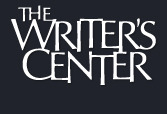 I'm delighted that The Writer's Center chose to profile me in the Winter/Spring 2012 Workshop and Event Guide. Novelist Barbara Esstman conducted the interview, which you can also read on TWC's blog, First Person Plural: Fully Engaged, a Profile of Clifford Garstang.
I'm delighted that The Writer's Center chose to profile me in the Winter/Spring 2012 Workshop and Event Guide. Novelist Barbara Esstman conducted the interview, which you can also read on TWC's blog, First Person Plural: Fully Engaged, a Profile of Clifford Garstang.What the piece leaves out (besides the bio I sent them . . .) is the reason they wanted to do the profile in the first place, and why they asked Barbara to do it. After I moved to Washington, DC from Kazakhstan in 1995 (that's a looong story), I began work on a novel and started taking Barbara Esstman's novel workshop at The Writer's Center in Bethesda. I got a lot out of the workshop, but I missed many sessions because by that time I'd begun work at The World Bank and was doing a lot of travelling to Asia. So I took the class a second time, and managed to make most of the sessions, and finished a draft of the book.
I then connected with a number of other writers who had taken that workshop and others and we formed a writers' critique group that met for years, even after I'd left the area. Anyway, I owe a lot to the place, and I highly recommend its classes.
And thanks to Barbara and TWC for the profile!
Published on December 06, 2011 14:50
The New Yorker: "What We Talk About When We Talk About Anne Frank" by Nathan Englander
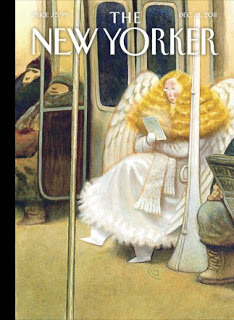
December 12, 2011: "WhatWe Talk About When We Talk About Anne Frank" by Nathan Englander
I enjoyed this story more than any I've read in The NewYorker in some time. According to the Q&Awith Nathan Englander, it is the title story to a collection he's bringingout in February. And, as anyone might guess from the title, the story hasparallels with the great Raymond Carver story, "What We Talk About When We TalkAbout Love." (Here's an essay about the Carver story, for anyone who needs arefresher: "Carver'sCouples Talk about Love.") The connections to Carver's story areinteresting, but Englander's story absolutely stands on its own.
The story gives us two couples. Mark and Lauren are visitingFlorida from Israel, where they have lived for many years, having converted toultra-Orthodox Judaism (and adopted the names Yerucham and Shoshona). They cometo see Debbie, Lauren's old friend from school, and her husband, the narrator.The narrator at first is bothered by the visitors, and everything about themgrates with him. When he offers Mark a drink, though, it turns out that theycan share this, at least, and they begin to consume a bottle of vodka. Sooneveryone is getting along better, jokes are cracked, etc., and it is thenrevealed that Debbie and Lauren used to get high when they were younger. Andthat leads to the two couples smoking dope that Debbie has found in her son'sthings, which is a shock to the narrator. But as the four get high, they moveinto darker territory, eventually playing the "Anne Frank game," which isspeculating about who would and who would not protect you when the nextHolocaust comes. This is obviously a serious topic, but on the page it's quitefunny.
Debbie is somewhat obsessed with the Holocaust, and thenarrator kids her about it. It would have been a different story, of course,but I might have wanted someone to point out that if a Holocaust comes inAmerica, the signs are pointing to Muslims, not Jews, being its victims. Butthat's beside the point. The story also addresses religious purity, and thequestion of Jewish culture versus Jewish religion.
It seems to me that the magazine often saves some of itsstrongest work for the end of the year, and this story is no exception to thattrend.
Story of the year material?
Published on December 06, 2011 10:48
Books for Soldiers (Press 53)
 Once again, Press 53 (publisher of my collection of linked stories, In an Uncharted Country, and my forthcoming novel in stories, What the Zhang Boys Know), is running its Books for Soldiers special. It's pretty simple. Buy a book from Press 53--there are lots of wonderful titles to choose from--and Press 53 will send a book to an active duty soldier at no cost to you. It's a great way to show your support for an Indie Press and our men and women overseas at the same time.
Once again, Press 53 (publisher of my collection of linked stories, In an Uncharted Country, and my forthcoming novel in stories, What the Zhang Boys Know), is running its Books for Soldiers special. It's pretty simple. Buy a book from Press 53--there are lots of wonderful titles to choose from--and Press 53 will send a book to an active duty soldier at no cost to you. It's a great way to show your support for an Indie Press and our men and women overseas at the same time.
Published on December 06, 2011 05:53
December 5, 2011
"The Face in the Window" in Valparaiso Fiction Review
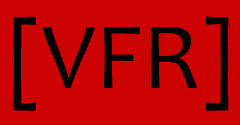 There's a new magazine on the scene, Valparaiso Fiction Review, and the first issue includes a story of mine: The Face in the Window. The story is part of my novel in stories,
What the Zhang Boys Know
, which will be published in September 2012 by Press 53. (I'm pleased to say that VFR has nominated the story for a Pushcart Prize.)
There's a new magazine on the scene, Valparaiso Fiction Review, and the first issue includes a story of mine: The Face in the Window. The story is part of my novel in stories,
What the Zhang Boys Know
, which will be published in September 2012 by Press 53. (I'm pleased to say that VFR has nominated the story for a Pushcart Prize.)The issue also includes stories by Meg Tuite, Bill Lantry, Andrea Dupree, Dallas Woodburn, and Norman Waksler.
Published on December 05, 2011 18:15
December 4, 2011
New Yorker Story of the Year -- Nominations are Open!
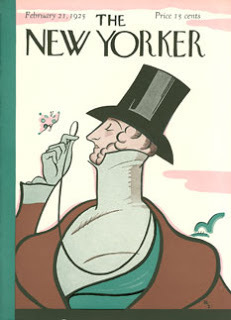 Since I began commenting each week on the fiction in the New Yorker, at year's end I have come up with a "Story of the Year." Once again, I will let readers vote from a list of finalists, which I will determine from my own preferences and the nominations of readers.
Since I began commenting each week on the fiction in the New Yorker, at year's end I have come up with a "Story of the Year." Once again, I will let readers vote from a list of finalists, which I will determine from my own preferences and the nominations of readers.To see a discussion of last year's winner (Claire Keegan's "Foster"), go HERE.
All you have to do to nominate is to leave a comment here on Perpetual Folly with the name of your choice. I will then compile a list of the top stories and create a poll. All very simple.
Forgot about the stories? No problem. Review them all by browsing through the posts from the whole year: New Yorker 2011.
Published on December 04, 2011 06:51
December 2, 2011
VCCA Residency--The End is Near
I'm nearing the end of my stay at VCCA. It's been arelatively productive period, and I have made a lot of progress on shaping anew novel. (If nothing else, I think I found a killer title for it.)
We didn't have a lot of artist presentations this week,which I was happy about. I love the presentations, but it's not so great whenthey happen every night. Not that anyone is obligated to attend, but I like tosupport the other resident fellows and, besides, they can be inspiring.
On Thursday we had a couple of brief open studios. First,Margie Nea, a photographer, showed us some of her amazing photographs from hermany trips taken on behalf of Bread for the World and other organizations. Theaccompanying YouTube video shows some of these pictures.
Then we moved to thenext studio where Katherine Fahey did a performance of her "cranky"—a light-boxpuppet show illustrating a shape-note song about a pioneering Vermont woman.(That description does NOT do the project justice; check out her website to geta better idea of what she's doing.)
Then on Friday night we had two poets reading in the livingroom. First Sabra Loomis read from her book and also some newer poems—lyrical andvery moving work about family, friends, and landscape. And then Dan Vera alsoread from his book and some newer poems. Dan's work is edgy and sometimespolitical. Both Sabra and Dan were very good readers. Plus, they supplied a coupleof big bottles of wine, some chocolate and nuts, and so many of us stayedaround after the reading to talk. It was the first night I didn't go back tothe studio in the evening to work.
It's been a nice stay. As always, I hope I can carry somemomentum with me when I resume work at home on Monday. We'll see.
Published on December 02, 2011 11:30
Tips for Writers: Dialogue Tags—Keep it Simple
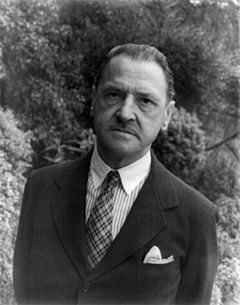
"Keep it simple," he said. "What's that you say?" she asked.
It is tempting for some writers to load dialogue tags withtoo much freight. In general, though, the simpler tags are the best. "Said" and"asked" are nearly invisible to the reader, and that's what the writer wants.They don't draw attention to themselves; the reader remains engaged with thecontent of the dialogue without being distracted by some odd delivery. Wheneverpossible, convey the method of delivery with the words themselves.
If you want to go beyond "said" and "asked," though—after all,some variety in the work can be nice—be sure that you stick to what I call "speakingverbs," verbs that describe the action of speaking words (such as "shout," "yell,"or "whisper"). Some speaking verbs, however, should generally be avoided on thegrounds that they tell the reader howthe words are being spoken when the manner of speaking could more effectivelybe shown through the dialogue itself. For example, "commanded" is arguably aspeaking verb, but a command is generally inherent in the words spoken. Ingeneral, avoid these "telling" speaking verbs.
Some writers go a step further and attempt to build agesture or an expression into the dialogue tag itself, and that just doesn'tmake sense. A character can say words while smiling, but he can't smile thewords. Likewise for "he laughed," "he pointed," "he worried," and so on.
I see these problems all the time in student work, and it'seasily fixed and explained. But the reason I chose to write about this topicthis week is because I've been reading some short stories by the great storywriter W. Somerset Maugham, and he makes this same mistake all the time. Here,for example, is a line from the story "P.& O." (which I'm reading in theshort collection Maugham's MalaysianStories):
"I suppose a woman of forty has no right to mind how shelooks," she smiled, as though he must know what vain thoughts occupied her.Willie! No, no, no! What were you thinking? She didn't smile those words! She mayhave been smiling when she said them, but you can't smile words.
So here's the tip: Keep it simple. When in doubt, stick with"said" or "asked." Even if you're Somerset Maugham. (That's him in the picture, by the way.)
Published on December 02, 2011 09:26
November 30, 2011
Guest Blogger: How I Read a Poetry Manuscript Submission, by Tom Lombardo
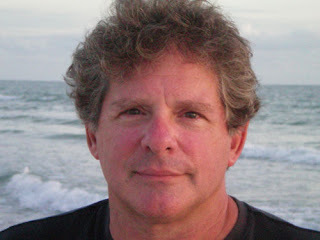
How I Read a PoetryManuscript Submission
by Tom LombardoPoetry Series EditorPress 53 www.press53.com
Slowly for the first 3 poems.
At Press 53, we ask for a sample of 10 poems for an opensubmission. If I solicit a sample personally, I will ask for 15-20 poems ormore.
As poetry series editor for Press 53, I've developed a threetier reading style. In the first reading, I'm looking specifically at threekeys: Diction, syntax, metaphor. If the submission lacks excitement in thosethree key areas, then I reject the submission. Usually, I know after a page ifthe poet is competent in those areas, but I will read onward regardless.
I love diction. As the building blocks of poetry, words mustbe carefully selected, much more carefully than in prose. I'm attracted touncommon diction. I like to see concrete nouns and active verbs. I don't likeoveruse of verbs of the form "to be," except in exposition. They slowa poem's movement and pacing, and of course, that's when they come in handy,when you want to slow the movement and pacing. But "to be" overusecauses me to reject. Oh, yes, I do understand that some poems do not have actionand are quiet poems of thoughtful reflection, and I make room for those, too.Overuse of adjectives and adverbs turns me quickly toward rejection—I believethat adjectives and adverbs undercut the imagistic beauty of poetry. Nouns andverbs create concrete images, not modifiers.
Regarding syntax—I feel the same way—I crave carefullyconstructed syntax. I look for something that is not prose syntax. Syntax isthe smallest unit for the compression that indicates poetry to me, the blinkinglights that say "Here is poetry! Read on!!" You would not believe theproportion of our submissions that I reject as abject prose. I often wonder howpeople can delude themselves by inserting line breaks into their prose and submittingit as poetry.
In this essay, "metaphor" stands for any trope,OK? It's easier to say metaphor than to say "metaphor, simile, synecdoche,metonymy, personification, synesthesia, allusion, irony, hyperbole,understatement, paradox, apostrophe, symbols." They're all metaphoric.Simply put, I look for language that moves the literal to the figurative,another hallmark of poetry.
If I arrive at the end of the submission's first pagewithout goosebumps from the diction and syntax or if the language does nottransport me to the figurative, then I know this submission wavers on the brinkof rejection. However, I do read on, unlike some editors, because my mission atPress 53 is to discover new voices, and sometimes the voice is buried in poem 3or 5 or 10. If I see nothing of my 3 keys by poem 4, then I start to read morequickly, scanning only for metaphor, and if I find one, I stop, and I startreading slowly again, maybe go back a few poems and re-read. In contentanalysis, that's called "stopping behavior." Metaphor stops me. Savesthe submission from rejection for at least another poem or two.
If I like the sample submission after tier 1, then I rockback in my chair that squeaks and think about the stories. For me, story is thesecond tier of analysis. What story or stories has the poet told. Small storiesor large stories, either one, but some level of story is important to me. Press53 has no interest in abstract poems or the faddish, clever anti-story poemsstylish in many American journals now. These too will pass. But story lives on.Story is granite. Poetry can be faddish, and trends in poetry—some lastingdecades—may obscure good poets. Think of Emily Dickinson.
Here's the truth: The audience reigns supreme at Press 53and other small presses. Not the poet. If the audience doesn't buy our books,we won't have a press next year to publish any poets at all. Arcane styles sellin academic circles. That generally means 200 copies or fewer. I'm looking forthose kinds of poetry manuscripts, written by the kinds of poets who involvethemselves in the sales of their collections. And I believe that good storieswill move both Press 53 and the poet toward a higher sales level. To me, poetrywith an intriguing story will set thereader dreaming beyond the final line.
A third tier of my reading revolves around aspects of craftthat include enjambments and sound, and then their combined effect on the linesof the poem. Why? Because those appeal to me as fundamental to poetry.Individual taste is my only defense for this. I'm the editor, so that's myprerogative. In this third reading, I ask: Are the line endings working well?If so, they show the skill of the poet. If not, then I must decide whether thepoems might work with different enjambments, which interestingly takes me backto the diction. Good diction makes it possible to find new enjambments. If theenjambments are not working, but the submission appeals to me on other levels,I must decide whether it's worth my time and effort to edit and then toconvince the poet to make suggested changes.
I also ask: Is the sound doing anything interesting? Soundcan demonstrate a high level of sophistication in a poet. For me, sound goesbeyond the most obvious rhyme, assonance, alliteration. I'm looking, actuallylistening, for the use of acoustic energy to create and release tension, andthis occurs mostly in the vowels, wonderfully hidden, though it can also occur,more obviously, in the consonants. I also like to read lines that block soundat each end—walls to make sound reverberate in the emotion of that space—orperhaps the ends of each couplet or triplet or stanza. I also look for soundthat creates mood or tone that supports the poem
Stop: I've decided not to provide samples as most blatheringessayists would. This is a blog with a word-limit, which I will surely exceed, nota Poetry magazine article. I will notethat Emily Dickinson's poems offer perfect examples for everything I have orwill mention here. My favorite contemporary poets—the ones I keep going backto—are Douglas Dunn, Simon Armitage,Satyendra Srivastava, current British Poet Laureate Carol Ann Duffy, and a hostof Eastern European poets, only two of whom are Nobel Laureates. Americanpoets? Contemporary? Too many to name, perhaps. However, I find many well-knowncontemporary American poets impoverish the story part of their craft, but Iwill mention current North Carolina Poet Laureate Cathy Smith Bowers as aparticular favorite of mine with great stories, terrific metaphor, strongdiction and syntax.
I have but one pet peeve: Rumi epigraphs. Automaticrejection. A particularly galling fad. In 2009 and 2010, every fourthsubmission had them. Call those "the Rumi years." The Rumi epigraphsseem to be going out of style more recently, probably because MFA programsstopped teaching him.
My greatest fear: I don't want to be an editor who wouldreject Emily Dickinson. In her era, Dickinsonmay have sold fewer than 10 books because her poetry operated on a planeperpendicular to the contemporary style. A century earlier, she may have beenburned at the stake, even in Amherst,for writing verse inspired by Lucifer! Dickinson's poetry did notcome to light for decades and did not come to fame for decades more, which maymean that the rest of the poetry world caught up to her premature vision. Shemay be the greatest American poet. Sadly, good poets will go undiscovered intoday's world of poetry. We have our fads and our styles and our preferencesjust as any other era. So, before I read submissions, I pray to the Muses: Ifthis is Emily, don't let me reject her.
Tom Lombardo: Poetry SeriesEditorTom Lombardo of Atlanta, GA, iseditor of TheTom Lombardo Poetry Selections forPress 53. Tom actively reads journals, magazines, ezines, and anthologies insearch of poets to bring to Press 53 by way of The Tom Lombardo PoetrySelection series. In 2008, Tom edited and published After Shocks: The Poetry ofRecovery for Life-Shattering Events (SanteLucia Books), which features 152 poems by 115 poets from 15 countries. Tom is awidely published and respected poet, and is a graduate of the MFA program atQueens University in Charlotte, NC. His mission is to bring 4-6 poetrycollections to Press 53 each year. To learn more about Tom and After Shocks: The Poetry ofRecovery for Life-Shattering Events visit www.poetryofrecovery.com.Contact Tom at Tom@Press53.com.
Published on November 30, 2011 10:00
November 29, 2011
The New Yorker: "The Musical Brain" by César Aira
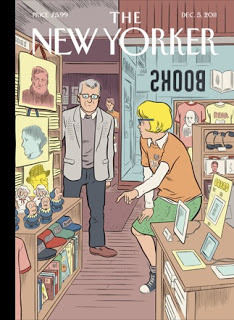
December 5, 2011: "The Musical Brain" by César Aira
Chris Andrews, translator
The storybegins normally—a family is out to dinner at a hotel restaurant. But then theoddities begin to pile up: a possible book drive being conducted in therestaurant; a visit next door to the theater to see the "musical brain"; avisit to the circus, recently rocked by a scandal involving twin dwarves andthe dwarf wife of one of them; and then the bizarre incidents in the theaterinvolving the "musical brain" and the dwarves, AND the former head librarianand school headmistress, who can't be who the narrator recalls she is.
Fortunatelywe have the Q&A with the Translator to confirm that this pattern is notunusual for this author:
"But as anyone who has read him knows, the 'correctness' is only syntactic: his sentences are well formed, as the linguists say, but his stories and his books are, well . . . deformed, swerving wildly, jumping from one kind of fiction to another, as in 'The Musical Brain.'"
Good to know. As for what it means . . . the bizarre incidents coincide with the founding of the town library, and so the egg we see at the end (laid by the dwarf and protected by the librarian) would seem to represent literacy, or possibly imagination, since the narrator's own imagination seems to have taken flight as a result of witnessing the events.
Or maybe it's just an egg.
In any case, it's an intriguing read. i'd be interested in seeing more of his work.
Published on November 29, 2011 18:40



